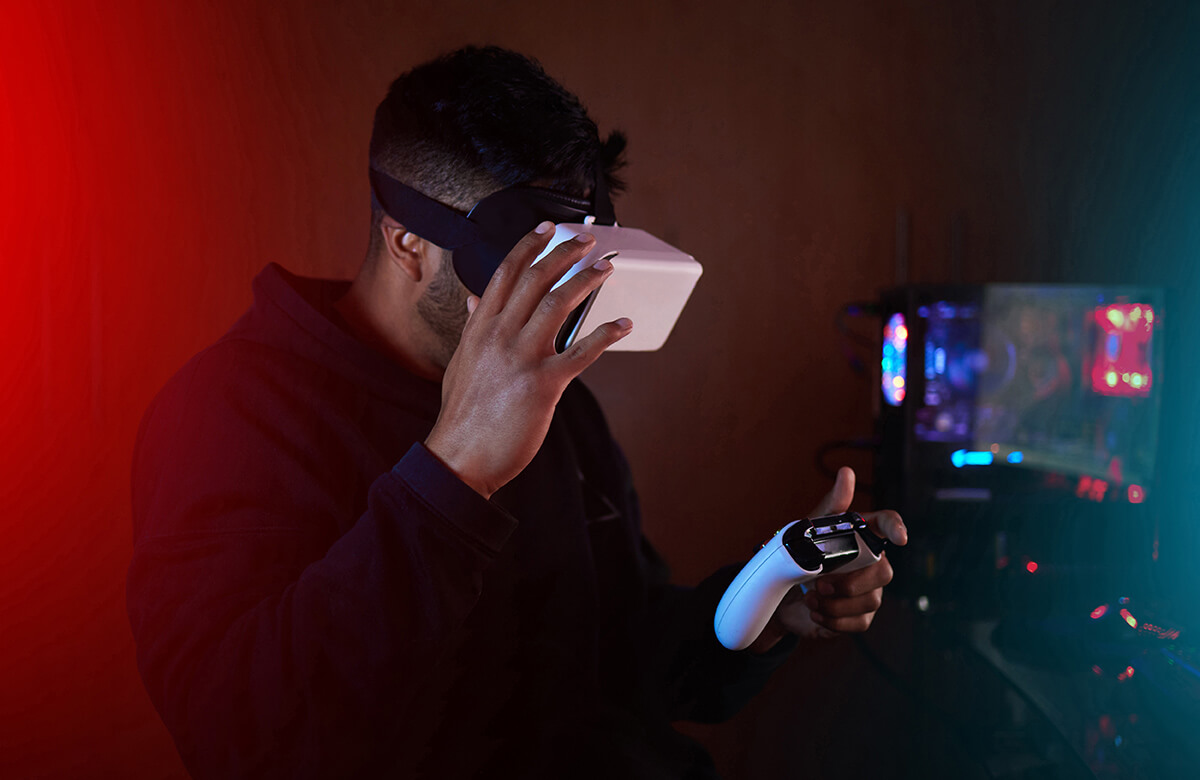In the world of sponsorship marketing, there’s a common misconception that atypical brand niches such as Home Improvement, Woodworking, or Landscaping cannot find success with social media marketing and influencer sponsorships. However, the reality is that there is a wealth of high-value creators in each of these niches who can bring tremendous value to brands through their content. The Rise of Niche Content Creators Atypical brand niches have seen a significant rise in dedicated content creators who specialize in their respective fields. These creators have emerged as experts within their niches, possessing in-depth knowledge, skills, and a genuine passion for what they do. Their content resonates with a highly engaged and targeted audience, making them valuable partners for brands seeking to tap into these niche markets. Let’s take a closer look at a few examples of how content creators in Home Improvement, Woodworking, and Landscaping have leveraged their influence through sponsorships to reach their audience effectively: Home Improvement: Home improvement content creators, such as DIY enthusiasts and renovation experts, have become influential figures within the niche. They produce engaging videos, tutorials, and before-and-after transformations that inspire and educate their audience. These creators often partner with brands that offer products and services relevant to the home improvement industry. For example, a content creator specializing in bathroom renovations might partner with a bathroom fixture brand or tool manufacturing company to showcase their products in a renovation project video. By doing so, the creator not only provides valuable content to their audience but also promotes the brand’s products in an authentic and practical manner. Woodworking: Woodworking content creators have gained substantial popularity on platforms like YouTube and Instagram. They share their craftsmanship, woodworking techniques, and project ideas with their dedicated audience of fellow woodworkers and enthusiasts. These creators often collaborate with brands that specialize in woodworking tools, equipment, and supplies. For instance, a woodworking content creator might partner with a brand known for its high-quality chisels to demonstrate their usage in a detailed tutorial video. This type of sponsorship integration allows the creator to showcase the brand’s products while providing educational and entertaining content to their audience. Landscaping: Landscaping content creators, such as gardeners, landscape designers, and plant enthusiasts, have cultivated engaged communities eager to learn about gardening techniques, plant care, and landscaping ideas. These creators often collaborate with brands that offer gardening tools, plant care products, or even outdoor furniture. For example, a landscaping content creator might partner with a brand specializing in organic fertilizers to create a video series on maintaining a healthy garden using their products. By aligning themselves with the creator’s expertise and reach, the brand can effectively target gardening enthusiasts and showcase the benefits of their products. These examples demonstrate the potential for content creators in obscure brand niches to integrate sponsorships seamlessly into their content. By collaborating with brands that align with their niche and resonate with their audience, these creators can create valuable and authentic partnerships that benefit both parties. The key to successful sponsorships lies in finding the right balance between promotional content and engaging, informative content. Content creators in these niches understand the importance of maintaining trust and authenticity with their audience. They carefully select brands that offer genuine value and are relevant to their niche. By doing so, they ensure that their sponsored content enhances their audience’s experience rather than interrupting it. Building Authenticity and Trust Working with content creators in atypical brand niches offers a distinct advantage when it comes to building authenticity and trust with the audience. Home improvement, woodworking, and landscaping enthusiasts highly value the opinions and recommendations of creators who share their passion and have established themselves as authorities in their respective fields. By partnering with these creators, brands can tap into the trust and credibility they have developed, allowing them to build authentic connections with their target audience. Here’s why building authenticity and trust through content creators is essential in these niches: Shared Passion and Expertise: Content creators in atypical brand niches are passionate individuals who genuinely love what they do. They have spent years honing their skills, gaining knowledge, and perfecting their craft. This shared passion and expertise create a strong bond with their audience, who admire and trust their recommendations. When brands collaborate with these creators, they align themselves with individuals who have already established themselves as credible sources in the niche. This association lends authenticity to the brand’s message and products, making it more likely to resonate with the audience. Authentic Storytelling: Content creators have a unique ability to tell stories that resonate with their audience. They can share personal experiences, showcase their projects, and demonstrate how specific products have played a significant role in their work. By partnering with creators, brands can tap into this authentic storytelling approach. When creators share their genuine experiences and opinions about a brand’s product or service, it creates a powerful connection with their audience. The audience perceives the brand as being endorsed by someone they trust, which increases their willingness to engage with and consider the brand’s offerings. Relatable Content: Content creators in atypical brand niches have a deep understanding of their audience’s needs, challenges, and aspirations. They create content that resonates with their audience on a personal level, addressing their pain points and offering valuable solutions. When brands collaborate with these creators, they can leverage their ability to create relatable content. Whether it’s sharing tips and tricks, showcasing innovative techniques, or recommending products, creators can integrate the brand seamlessly into their content in a way that feels natural and relevant. This relatability fosters trust and encourages the audience to engage with the brand’s offerings. Community Engagement: Content creators in these niches have built thriving communities of like-minded individuals who actively engage with their content. These communities serve as a platform for discussions, shared experiences, and recommendations. By partnering with creators, brands gain access to these highly engaged communities and can participate in meaningful conversations. This direct engagement not only helps the brand understand its target audience
Virtual Reality refers to a simulated experience that can be similar to or completely different from the real world. VR technology typically involves wearing a head-mounted display that immerses users in a computer-generated environment, often accompanied by motion tracking and interactive controllers. VR technology has made significant strides in recent years, with improved graphics, increased affordability, and a broader range of content. This has led to a surge in popularity and adoption of VR across various sectors, including gaming, entertainment, education, and training. One new notable headset is the Meta Quest 3 by Meta Augmented Reality overlays digital content onto the real world, enhancing users’ perception and interaction with their environment. AR experiences are typically accessed through mobile devices or smart glasses, allowing users to see and interact with virtual objects in real-time. AR has found applications in fields such as advertising, retail, healthcare, and tourism. For instance, AR allows customers to try on virtual clothing or visualize furniture in their homes before making a purchase. What is Mixed Reality? Most recently, Apple released their Vision Pro which is ‘Mixed Reality’, or a combination of both VR and AR. Apple’s Vision Pro mixed reality headset presents exciting opportunities for sponsorships and content creators. With its ability to transform any room into a personal theater and provide stunning visuals, content creators can deliver immersive and engaging experiences to their audiences. The 3D camera feature allows creators to capture spatial photos and videos, offering a new level of storytelling and enhancing the sponsored content they produce. The collaborative capabilities, such as life-size FaceTime calls and app-based collaboration, enable content creators to connect and collaborate with sponsors and colleagues in a more immersive and interactive way. Additionally, the visionOS spatial operating system empowers creators to develop innovative apps that fill the space around users, providing unique sponsorship opportunities that extend beyond traditional screens. The customizable environments and EyeSight feature also enhance brand integration possibilities, allowing sponsors to create branded virtual landscapes and ensuring that content creators remain connected with their audience while using the headset. The Vision Pro headset may open up new avenues for sponsorships and will enable content creators to deliver captivating and immersive sponsored content experiences to their viewers. The potential of VR and AR as platforms for content creation and consumption VR and AR offer unprecedented opportunities for content creators to craft immersive and interactive experiences. Users can engage with content on a more personal and engaging level, enabling new forms of storytelling, gaming, and education. Content creators in VR and AR must adapt their storytelling techniques to leverage the immersive nature of these technologies. They face challenges such as developing engaging narratives, designing intuitive interactions, and ensuring compatibility with various VR and AR platforms. Sponsorships involve brands collaborating with content creators to promote their products or services. In the digital landscape, sponsorships provide a means for brands to reach targeted audiences through authentic and engaging content. Sponsorships offer content creators financial support and resources to create high-quality content. Brands benefit from increased brand visibility, access to the creator’s dedicated fan base, and the opportunity to align their products or services with relevant content. VR and AR provide a unique canvas for brands to create memorable and interactive experiences that seamlessly integrate their products or services. Monetization Models for VR and AR Content Creators Creating premium content and offering subscription-based access: Content creators in the VR and AR space can cater to their dedicated audience by creating premium content and offering subscription-based access. This model allows creators to offer exclusive and high-quality experiences that are only available to subscribers. By providing access to a range of immersive experiences, such as advanced levels, special events, or unique storylines, content creators can offer added value to their most loyal fans. Subscribers gain the benefit of experiencing content that goes beyond what is available to the general public, creating a sense of exclusivity and reward for their support. Building communities and offering additional perks to subscribers: Subscription-based models not only provide access to premium content but also allow content creators to build communities and offer additional perks to subscribers. These perks can include early access to new releases or updates, behind-the-scenes content that provides insights into the creative process, or exclusive merchandise tied to the VR or AR experience. By offering these additional benefits, content creators can foster a sense of belonging and engagement within their subscriber community. Subscribers feel a closer connection to the creator and fellow subscribers, creating a space for interaction, discussions, and shared experiences. This sense of community can be further strengthened through exclusive events, Q&A sessions, or even virtual meet-ups, where subscribers can directly engage with the content creator and each other. Subscription-based models provide content creators with a more sustainable and consistent revenue stream compared to one-time purchases or ad-based models. They allow creators to focus on creating high-quality content without being solely dependent on sponsorships or ad revenue. By offering premium content and additional perks to subscribers, content creators can reward their most dedicated fans and cultivate a loyal and supportive community. Subscribers, in turn, receive enhanced access and benefits, along with the satisfaction of directly supporting the creators they admire. The subscription-based model not only offers financial stability but also promotes a sense of belonging, exclusivity, and shared experiences. It allows content creators to continuously innovate and produce captivating VR and AR content, knowing they have a dedicated audience willing to support their creative endeavors. The subscription model encourages ongoing engagement and relationship-building between creators and subscribers, fostering a mutually beneficial connection that drives the growth and sustainability of the VR and AR ecosystem. In-App Purchases and Microtransactions Integrating virtual goods and in-app purchases within VR and AR experiences: Content creators have the opportunity to monetize their creations by integrating virtual goods and in-app purchases within VR and AR experiences. These virtual goods can include items such as digital accessories, clothing, furniture, or even virtual currency that users can acquire and use within
Newsletters have become a popular medium for delivering curated content, industry insights, and valuable information directly to subscribers’ inboxes. Beyond providing valuable content, newsletters also offer a unique opportunity for creators to monetize their efforts through sponsorships. In this comprehensive guide, we will explore the world of newsletter sponsorships, including strategies for securing brand deals, integrating sponsors effectively, and maximizing revenue potential. The Value of Newsletter Sponsorships Newsletter sponsorships provide a win-win situation for both creators and brands. Creators can monetize their newsletters while maintaining the trust and engagement of their audience. At the same time, brands gain access to a highly targeted audience and the opportunity to promote their products or services. Here are a few examples of tech newsletters and the types of sponsors they often collaborate with: Tech Insights Weekly: This newsletter focuses on delivering the latest tech industry news, product reviews, and insights. Tech software companies, SaaS providers, and consumer electronics brands often seek sponsorship opportunities with “Tech Insights Weekly” to reach their target audience of tech enthusiasts. Entrepreneur’s Edge: Targeting aspiring and established entrepreneurs, this newsletter offers valuable advice, tips, and resources for business growth. Business software providers, productivity tools, and professional development platforms are examples of potential sponsors seeking to connect with the “Entrepreneur’s Edge” audience. Building Your Subscriber Base: Before actively seeking brand deals, it’s important to establish a solid subscriber base. While there is no specific threshold for the number of subscribers required to secure sponsorships, though a larger and more engaged audience tends to attract more interest from brands. Here are some strategies to grow your newsletter subscribers Compelling Opt-in Incentives: Offer valuable content upgrades, exclusive resources, or access to a community to incentivize readers to subscribe. Cross-Promotion: Collaborate with other newsletter creators or influencers in related niches to cross-promote each other’s newsletters and gain exposure to new audiences. Social Media Promotion: Leverage social media platforms to promote your newsletter and engage with potential subscribers. Encourage your existing audience to share and recommend your newsletter to their networks. Crafting an Attractive Sponsorship Proposal: When approaching brands for sponsorship deals, it’s crucial to create a compelling sponsorship proposal that highlights the value you provide and aligns with their objectives. Consider the following elements when crafting your proposal: Audience Profile: Provide an overview of your subscriber demographics, including their interests, preferences, and engagement metrics. Showcase the relevance and value of your audience to potential sponsors. Engagement Statistics: Share key metrics such as open rates, click-through rates, and conversion rates to demonstrate the level of engagement and interaction your newsletter generates. Sponsorship Options: Present different sponsorship opportunities, including banner ads, sponsored content, dedicated newsletters, or exclusive offers to capture the brand’s interest. Tailor these options to align with their goals and target audience. Integrating Sponsors Effectively: To maintain the trust and engagement of your subscribers, it’s essential to integrate sponsors seamlessly into your newsletters. Consider the following approaches: Native Content: Craft sponsored content that matches your newsletter’s style and tone, providing value to your audience while highlighting the sponsor’s offerings. Curated Recommendations: Recommend sponsored products or services as part of your regular content, positioning them as valuable resources or solutions for your readers. Exclusive Offers: Provide exclusive discounts or promotions for your subscribers, creating a sense of exclusivity and added value. Nurturing Long-Term Partnerships: Building strong relationships with sponsors is key to recurring revenue and long-term partnerships. Consider the following strategies to nurture sponsor relationships: Deliver on Promises: Ensure that you meet the agreed-upon deliverables and deadlines, providing sponsors with a positive experience. Communication and Feedback: Regularly communicate with sponsors, providing updates, seeking feedback, and addressing any concerns or suggestions they may have. Track Performance: Monitor and share campaign performance metrics with sponsors, demonstrating the impact of their sponsorship and the value they receive. Which metrics should you track for your newsletter? When it comes to tracking metrics for your newsletter, it’s important to focus on key performance indicators (KPIs) that provide insights into the engagement and effectiveness of your content. Here are some metrics that newsletters should consider tracking: Open Rate: This metric measures the percentage of subscribers who open your newsletter. A high open rate indicates that your subject lines and preview text are compelling and resonating with your audience. Click-through Rate (CTR): CTR measures the percentage of subscribers who click on a link within your newsletter. It reflects the level of interest and engagement your content generates. Tracking CTR helps you identify the topics, calls-to-action, or sections that resonate most with your audience. Conversion Rate: Conversion rate measures the percentage of subscribers who take a desired action, such as making a purchase, signing up for a webinar, or downloading a resource. By tracking this metric, you can evaluate the effectiveness of your newsletter in driving desired outcomes. Subscriber Growth: Keep track of the growth rate of your subscriber base. This metric helps you understand the success of your audience acquisition efforts and the overall reach of your newsletter. Unsubscribe Rate: Monitor the rate at which subscribers choose to unsubscribe from your newsletter. A high unsubscribe rate may indicate that your content or frequency does not align with subscribers’ expectations. Analyze this metric to identify potential areas for improvement. Bounce Rate: Bounce rate measures the percentage of undeliverable emails due to invalid email addresses or other technical issues. A high bounce rate can impact your overall deliverability and email reputation. Time Spent on Page: If you have a web version of your newsletter or drive traffic to a landing page, tracking the average time spent on the page can give you insights into how engaged your audience is with the content. Longer average time spent indicates higher engagement and interest. Social Media Shares: Monitor the number of shares your newsletter content receives on social media platforms. This metric provides an indication of the virality and reach of your content beyond your subscriber base. Revenue or Conversion Value: If your newsletter includes sponsored content or affiliate links, track the revenue generated or
User-generated content (UGC) has revolutionized the way creators engage with their audience and monetize their influence. In this digital era, creators are leveraging UGC sponsorship deals as a strategic approach to generate recurring revenue. By collaborating with brands to incorporate UGC into their sponsorship agreements, creators can create authentic, compelling content while building long-term partnerships. In this blog post, we’ll explore the concept of UGC, its benefits for creators, and practical tips on how to leverage UGC sponsorship deals for sustainable recurring revenue. Understanding User-Generated Content User-generated content refers to any form of content created by individuals rather than brands themselves. It encompasses a wide range of media, including images, videos, reviews, testimonials, social media posts, and more. UGC allows creators to tap into the creativity and authenticity of their audience, fostering a sense of community and building trust. The Power of UGC Sponsorship Deals: Enhanced Authenticity: UGC sponsorship deals provide creators with the opportunity to align their content with brands in an authentic way. By integrating sponsored products or services into their UGC, creators can maintain their unique voice and style while engaging their audience. Long-Term Partnerships: UGC sponsorship deals often pave the way for long-term partnerships between creators and brands. By consistently producing high-quality UGC that showcases the brand’s offerings, creators can build trust and establish themselves as reliable ambassadors, leading to recurring sponsorship opportunities. Diversified Revenue Streams: UGC sponsorship deals offer creators a diversified approach to revenue generation. Instead of relying solely on traditional ad placements or one-off collaborations, creators can create a steady stream of income by incorporating sponsored UGC into their content strategy. Leveraging UGC Sponsorship Deals for Recurring Revenue Identifying the Right Brands: It’s crucial for creators to align themselves with brands that resonate with their audience and fit their niche. Seek out brands that share similar values and have a genuine interest in collaborating on UGC sponsorship deals. Crafting Compelling UGC: The key to successful UGC sponsorship deals lies in creating engaging and authentic content. Develop creative ideas and formats that seamlessly integrate sponsored products or services into your content while maintaining the trust of your audience. Establishing Clear Sponsorship Guidelines: When entering into UGC sponsorship deals, establish clear guidelines with the brand to ensure both parties are aligned on the content expectations, deliverables, timelines, and compensation. This helps create a mutually beneficial partnership and minimizes misunderstandings. Building and Nurturing Relationships: UGC sponsorship deals often go beyond one-off collaborations. Foster strong relationships with brands by delivering exceptional content, engaging with their marketing teams, and providing valuable feedback. Building these relationships can lead to recurring sponsorship opportunities and mutual growth. Promoting UGC on Multiple Channels: Maximize the impact of UGC sponsorship deals by promoting the content across various platforms and channels. Share it on social media, feature it on your website or blog, and consider leveraging email marketing to reach a wider audience. Measuring and Showcasing Results: To demonstrate the effectiveness of UGC sponsorship deals, utilize analytics tools to track engagement, reach, and conversions. Share these insights with brands to showcase the value of the partnership and negotiate future recurring sponsorship opportunities. The Rise of Short-Form UGC Short-form UGC has experienced exponential growth in recent years, with platforms like TikTok and Instagram Reels leading the way. These platforms have become hubs for creativity, allowing users to create and share short videos that entertain, educate, and inspire. TikTok, in particular, has become a global sensation, boasting over a billion active users worldwide. TikTok’s algorithm-driven feed and viral nature make it an ideal platform for creators to gain visibility and build a dedicated following. By consistently creating engaging and authentic content, creators can amass a large audience, which in turn attracts the attention of brands looking for promotional opportunities. Here’s how creators can leverage TikTok for sponsorship deals: Showcasing Products: Creators can integrate sponsored products seamlessly into their TikTok videos, demonstrating their features, benefits, and unique use cases. By presenting products in a creative and entertaining way, creators can capture their audience’s attention and generate interest in the brand. Participating in Challenges: TikTok challenges are a popular feature that encourages users to create videos based on a specific theme or concept. Creators can collaborate with brands to launch sponsored challenges, amplifying brand visibility and engaging with their audience on a deeper level. Influencer Campaigns: Brands often partner with influential TikTok creators to promote their products or services. Creators can negotiate sponsored content deals where they create dedicated videos showcasing the brand and its offerings to their followers. Instagram Reels for Sponsorship Opportunities:Instagram Reels, a short-form video feature within the Instagram platform, offers similar opportunities for creators to leverage UGC for sponsorship deals. With its user-friendly interface and expansive user base, Reels can be a powerful tool for creators to monetize their content. Here are some strategies for creators looking to attract brand sponsorships on Instagram Reels: Product Demonstrations: Creators can create Reels that feature sponsored products and provide informative and engaging demonstrations. By showcasing the products in action and highlighting their unique features, creators can create authentic and relatable content that resonates with their audience. Storytelling and Narrative-based Content: Brands are often looking to align their messaging with compelling stories. Creators can leverage Reels to tell captivating stories that incorporate sponsored products or brand messages, creating a seamless integration between the content and the sponsor. Collaborations and Influencer Takeovers: Collaborating with other creators or taking over a brand’s Instagram account for a day can be an effective way to showcase sponsored content to a wider audience. These collaborations allow for cross-promotion and can drive significant engagement and visibility for both the creator and the brand. Creating Recurring Revenue Streams One of the key advantages of UGC sponsorships is the potential for recurring revenue. By consistently creating valuable and engaging content, creators can establish themselves as trusted influencers and attract long-term sponsorship deals. Here are some strategies to create recurring revenue streams: Building Long-term Partnerships: Cultivating strong relationships with brands can lead to ongoing sponsorship opportunities.
The world of marketing has seen a significant shift in recent years, with the rise of social media and the increasing popularity of content creators. These individuals have amassed large followings on platforms like YouTube, Instagram, TikTok, and others by producing engaging and entertaining content. Brands have been quick to recognize the value of partnering with these creators to reach their audiences. However, some brands have pre-conceived ideas that these creators must drive immediate sales, or else the campaign is a loss. In this blog post, we will explore why this mindset needs to change, and why sponsoring content creators should be viewed as a long-term strategy. It’s important to remember that content creators aren’t traditional marketers. They don’t have the same training or experience in creating ads that drive immediate sales. Instead, they excel at creating engaging content that resonates with their audiences. When brands partner with content creators, they’re tapping into this ability to connect with people on a deeper level. The goal should be to build brand loyalty and increase engagement over time, rather than focusing solely on immediate sales. One of the primary benefits of sponsoring content creators is the ability to solidify the brand as a household name across demographics. By partnering with creators who have diverse audiences, brands can increase their visibility and exposure to new markets. Over time, this can lead to increased brand recognition and loyalty, which can translate into long-term sales growth. When it comes to long-term “household name” marketing, Coca Cola is a great example. The brand has been around for over a century and has become synonymous with soda. While they do run short-term campaigns and promotions, their primary goal is to build a strong, long-term relationship with their consumers. One of the ways that Coca Cola has achieved this is through their advertising campaigns. Coca Cola has invested heavily in advertising over the years, with a focus on creating memorable and emotional ads that resonate with consumers. For example, their “Share a Coke” campaign encouraged consumers to buy bottles of Coca Cola with personalized labels, which created a sense of personalization and connection with the brand. The campaign was so successful that it has been run in multiple countries and languages. Another way that Coca Cola has built a strong, long-term relationship with their consumers is through sponsorships and partnerships. Coca Cola has sponsored numerous sporting events, including the Olympics and FIFA World Cup, which has helped them reach a global audience. They have also partnered with celebrities and influencers, such as Taylor Swift, who helped launch their “1989” campaign. These partnerships help Coca Cola reach new audiences and increase their visibility over time. Similarly, other big brands have taken a long-term approach to marketing by focusing on building brand recognition and loyalty over time. For example, Nike has invested heavily in sponsorships with professional athletes and teams, which has helped them become one of the most recognizable brands in the world. Apple has also focused on building a strong brand identity through sleek and innovative product design, which has helped them become a household name in the tech industry. When it comes to partnering with content creators, there are numerous examples of brands that have taken a long-term approach to building their brand recognition and loyalty. For example, the beauty brand Glossier has become extremely popular among millennials and Gen Z consumers by partnering with influencers and content creators. Glossier has worked with creators like Emily Weiss, the founder of the brand, to create authentic and relatable content that resonates with their target audience. Another example is the fast-food chain Wendy’s, which has become known for their witty and irreverent social media presence. Wendy’s has partnered with content creators to create engaging and entertaining content that goes beyond just promoting their products. For example, they worked with the YouTuber MrBeast to create a viral video where he ate Wendy’s chicken nuggets for 24 hours straight. While the video didn’t directly promote Wendy’s products, it helped increase the brand’s visibility and engagement with younger consumers. Another benefit of partnering with content creators is the ability to leverage their existing relationships with their followers. Content creators have built trust with their audiences over time, and their recommendations hold significant weight. By partnering with a creator, brands can tap into this trust and use it to their advantage. The key is to approach this partnership in a way that is authentic and genuine. Pressuring a creator to drive sales may lead to inauthentic content, which can harm the brand’s reputation in the long run. It’s also important to note that content creators have their own set of goals and objectives when it comes to partnering with brands. They want to create content that resonates with their audience and builds their own brand. If a brand is too focused on driving immediate sales, they may be missing out on the opportunity to build a long-term partnership with a creator. By taking a more strategic approach, brands can build relationships with creators that benefit both parties in the long run. Ultimately, sponsoring content creators should be viewed as a long-term strategy rather than a short-term sales tactic. By focusing on building brand loyalty and engagement, brands can solidify their position as a household name across demographics. The world of marketing is changing rapidly, and brands need to adapt to keep up. Content creators are an increasingly important part of the marketing landscape, and brands that partner with them need to take a more strategic approach. Additionally, by taking an authentic approach to partnerships, brands can leverage the trust and relationships that creators have built with their audiences. It’s time for brands to let go of the idea that creators must drive immediate sales and embrace the potential for long-term growth that comes with partnering with content creators.
Social media has become an essential platform for brands and businesses to promote their products and services, and content creators are an important part of this ecosystem. However, with the rise of influencers and social media personalities, the problem of fake followers has become rampant. Fake followers can deceive brands into thinking that a content creator has a large and engaged audience, when in reality, they have purchased their followers and likes. This not only cheats brands but also deceives real followers who may be influenced by content creators with false statistics. In this blog post, we will discuss best practices for spotting fake followers on content creators’ social media accounts. Skewed Engagement Metrics One of the most obvious signs of fake followers is skewed engagement metrics. This means that the content creator has a large number of followers but little to no engagement on their posts. This is a red flag because it is highly unlikely that a content creator with a large following would not have any engagement on their posts. Engagement metrics include likes, comments, shares, and clicks. If a content creator has a large number of followers but very few likes or comments on their posts, it is possible that they have purchased their followers. A good practice is to check the ratio of followers to engagement. If the ratio seems off, then it is likely that the followers are fake. Comments Being Turned Off Another red flag is when comments are turned off on a content creator’s posts. Comments are an important way for followers to engage with a content creator and share their thoughts on the content. If comments are turned off, it could be a sign that the content creator is trying to hide something. For example, if they have purchased fake followers and are afraid that their comments will reveal this. A good practice is to check if the content creator regularly turns off comments on their posts or if it is just on select posts. Random Comments that have Nothing to do with the Post Another way to spot fake followers is by looking at the comments on the content creator’s posts. If the comments seem random and have nothing to do with the post, it could be a sign that the comments are fake. Fake comments are often generated by bots and can include comments like “great post,” “awesome,” or “love this.” These comments are generic and do not provide any specific feedback on the content. A good practice is to read through the comments and see if they seem genuine and relevant to the post. Random Spikes of Likes/Comments that Deviate Well Away from the Creator’s Average Another sign of fake followers is random spikes in likes or comments that deviate well away from the content creator’s average. For example, if a content creator usually receives around 500 likes on their posts, but suddenly receives 5,000 likes on one post, it could be a sign of purchased likes. Purchased likes and comments are often used to boost the engagement metrics on a post, making it appear more popular than it actually is. A good practice is to keep an eye on the content creator’s engagement metrics and see if there are any sudden spikes that seem out of place. Exact Same Like/Comment Amount on Multiple Posts Another way to spot fake followers is by looking at the exact same like/comment amount on multiple posts. For example, if a content creator has 10,000 followers and every post they make receives exactly 100 likes and 50 comments, it could be a sign of purchased engagement. Purchased engagement often comes in packages, where a content creator can purchase a set number of likes or comments for each post. A good practice is to look at the engagement metrics on multiple posts and see if they are consistent or if there are any patterns that seem suspicious. Other Practices to Consider Here are some other practices to consider when trying to spot fake followers on content creators’ or influencer’s social media accounts: Check for inactive followers: Another way to spot fake followers is by checking for inactive followers. This means checking the content creator’s follower list to see if there are any accounts that have not posted or engaged with any content recently. If there are a large number of inactive followers, it could be a sign that the content creator has purchased their followers. Real followers are more likely to engage with the content creator regularly, so a high number of inactive followers is suspicious. Analyze the quality of engagement: Another practice to consider is analyzing the quality of engagement on a content creator’s posts. Real engagement includes thoughtful comments, shares, and likes from followers who are genuinely interested in the content. Fake engagement, on the other hand, often includes generic comments or likes from fake accounts. Analyzing the quality of engagement can help you spot fake followers and determine if a content creator’s audience is genuine. Look for a diverse audience: A content creator with a diverse audience is more likely to have a genuine following than one with a homogenous audience. Though, if a creator is very niche specific, like an athlete, most of their followers will probably have an interest in the same niche. A diverse audience includes followers from different regions, ages, and backgrounds, while a homogenous audience includes followers from the same region, age group, or background. A content creator with a homogenous audience is more likely to have purchased their followers, as it is easier to target a specific demographic with fake followers. Use social media analytics tools: Social media analytics tools can help you analyze a content creator’s engagement metrics and determine if their audience is genuine. These tools can analyze metrics such as likes, comments, shares, and follower growth to determine if a content creator’s engagement is authentic or fake. Some popular social media analytics tools include Hootsuite, Sprout Social, and Iconosquare. Research
As content creation continues to grow in popularity, brands are turning to content creators to help promote their products and services. With a variety of ways to promote brands within content, content creators have the ability to reach their audiences in unique and creative ways. In this blog post, we’ll explore some of the different brand promotion integration types for content creators. Product Placements Product placement is a type of brand promotion that involves the integration of a brand’s product or service into a piece of content in a way that feels natural and unobtrusive. It can be an effective way for brands to reach their target audience and increase brand awareness, as well as generate sales and drive traffic to their website. There are two main types of product placement: overt and subtle. Overt product placement is when the product or service is prominently featured in the content, often with a close-up shot or a focus on the brand’s logo or packaging. Subtle product placement, on the other hand, is when the brand’s product or service is integrated more organically into the content, without drawing too much attention to itself. When it comes to product placement, best practices include finding a content creator whose audience aligns with the brand’s target demographic, ensuring that the product or service is relevant to the content being created, and making sure that the placement feels natural and unforced. Organic integrations, such as shoutouts and subtle product placements, can be especially effective when it comes to promoting a brand or product. Shoutouts are when a content creator mentions a brand or product in a piece of content, often in a natural and conversational way. Subtle product placements, on the other hand, involve integrating a brand’s product or service into the content in a way that feels natural and unobtrusive. For example, a fashion influencer may incorporate a brand’s clothing into a styled outfit, or a food blogger may feature a brand’s product in a recipe video. In both cases, the placement feels natural and unobtrusive, and it’s more likely to resonate with the content creator’s audience. One important consideration when it comes to product placement is disclosure. In many countries, content creators are required to disclose sponsored content, including product placements, to their audience. This can be done through a variety of methods, such as using hashtags like #ad or #sponsored, or including a disclosure statement in the content itself. Shoutouts Brand shoutouts are another popular way for content creators to promote a brand. Shoutouts are essentially a verbal or written recommendation for a product or service, often accompanied by a tag or mention of the brand’s social media handle. They are a quick and effective way for brands to reach a wider audience and increase their visibility. There are a few best practices for organic shoutouts that content creators should keep in mind: Choose brands you actually use and believe in: As with product placements, it’s important to only promote brands and products that align with your values and that you genuinely enjoy using. This will come across as authentic and build trust with your audience. Be genuine and natural: When giving a shoutout, it’s important to sound like yourself and not like you’re reading off a script. Speak from the heart and talk about your personal experience with the brand or product. Don’t overdo it: While shoutouts can be effective, it’s important not to overdo it and turn your content into one long advertisement. Be selective about the brands you promote and mix in other types of content as well. Tag the brand: Make sure to tag the brand’s social media handle in your post or caption so that they are notified of the shoutout and can potentially share it with their own audience. One example of a successful brand shoutout was when actress Reese Witherspoon gave a shoutout to the clothing brand Draper James on her Instagram account. Witherspoon, who is also the founder of the brand, posted a photo of herself wearing a Draper James dress and tagged the brand’s handle in the caption. The post received over 250,000 likes and helped to increase brand awareness and drive sales for Draper James. Another example comes from YouTube content creator David Dobrik, who often gives shoutouts to his sponsor SeatGeek in his videos. Dobrik will typically include a segment where he surprises his friends with tickets to a concert or event that he bought on SeatGeek, and will mention the brand by name. This type of organic integration feels natural and helps to build brand loyalty among Dobrik’s audience. Instagram Reels Instagram Reels are a newer feature that has gained popularity among content creators. Reels are short videos that are typically 15-30 seconds in length and can include music, effects, and text. Brands can work with content creators to create Reels that feature their products or services. For example, a clothing brand may partner with a fashion influencer to create a Reel showcasing their latest collection. Instagram Stories Instagram Stories are another popular way for content creators to promote brands. Stories are short videos or images that disappear after 24 hours. Brands can work with content creators to create Stories that feature their products or services. For example, a food blogger may share a Story featuring a meal they made using a particular brand of cooking oil. TikToks TikTok has become a powerhouse in the world of social media, and content creators have taken notice. Brands can work with content creators to create TikToks that feature their products or services. For example, a fitness brand may partner with a fitness influencer to create a TikTok featuring a workout routine that incorporates their products. Sponsored Posts Sponsored posts are another common way for content creators to promote brands. This involves creating content that is sponsored by a brand and includes a call-to-action for the audience to engage with the brand. For example, a travel blogger may create a sponsored post promoting








